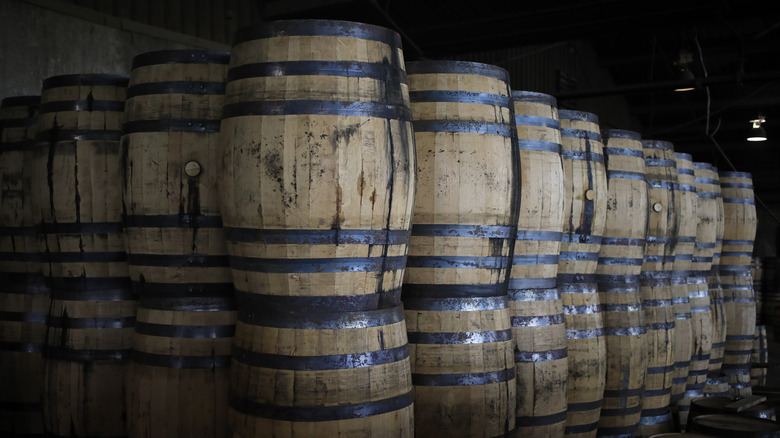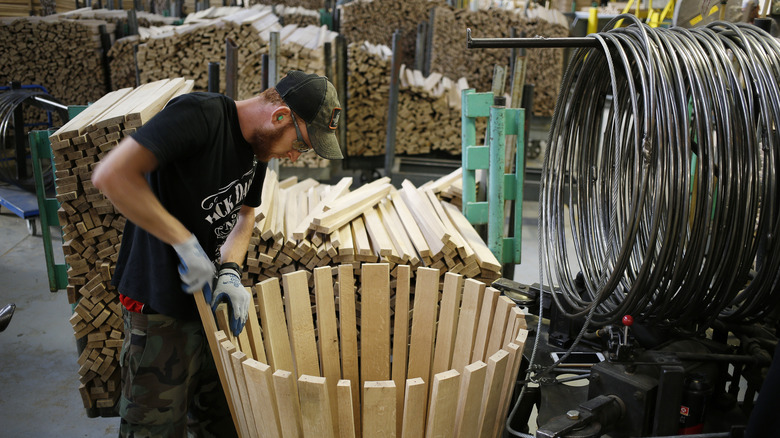Why The American Oak Tree Is Superb For Aging Bourbon
Bourbon taters often use the adjective "oaky" to describe good bourbon — and rest assured, it's not a made-up descriptor. After distillation, would-be bourbon is poured into new charred oak barrels and put into cellars to age. Over time, the wood imparts its rich flavor and smoky aroma to the liquor. But while bourbon barrels can be made from any kind of oak, the standard choice for most distilleries is American white oak (Quercus alba).
The biggest reason is simple: American white oak trees are more abundant in the bourbon-making regions of America and have been used to make barrels since time immemorial. But beyond tradition, American oak's natural characteristics make it excellent for barrel-making. Its dense cell structure prevents moisture leakage, promoting a gentler, more controlled bourbon-wood interaction. This interaction is responsible for the transformation of newly distilled whiskey — clear in color, sharp in taste — into the amber-hued, refined spirit that's bottled years down the line.
Additionally, oak wood contains structures called tyloses, which prevent it from rotting due to prolonged contact with the wet bourbon and ensure that the spirit matures safely and without disturbance. And of course, there are also the flavors that the oak naturally imparts to the bourbon. People love the finishing notes of caramel, vanilla, and coconut that naturally emerge in bourbon aged in this type of barrel. When combined with the smokiness derived from the charred or toasted wood casks, you get the wonderfully complex flavor profile that bourbon is renowned for!
What other kinds of oaks are used for making bourbon barrels?
American white oak casks are the most popular choice for aging bourbon, but they aren't the only option. You'll find many bourbons aged in barrels made from European oak (Quercus robur) and even Mongolian oak (Quercus mongolica), also known as mizunara oak. As you might expect, each type of wood imparts significantly different flavors and characteristics to the bourbon.
European oak is cultivated in northern Spain. It takes longer to grow and yields wood with a tighter grain compared to American white oak. Consequently, the bourbon has to age for longer inside these casks to get the desired taste and aroma. But the longer maturation period is worth it: The resulting bourbon is darker in color and richer in taste, with pronounced hints of dried fruits. Though it's not quite the top choice for bourbon production, European oak is widely used for aging scotch whisky.
For the most exclusive varieties of bourbon, you'll have to look at Mongolian oak casks. This type of oak barrel is exceptionally rare, as it takes anywhere from 200 to 500 years to grow a tree suitable for making the high-quality casks. Reviews of bourbons aged in Mongolian oak barrels vary, but they are said to feature aromatic notes of pine and caramel, with finishing touches of wood, clove, pepper, and spice. It's a prime example of the remarkable diversity in wood choices for crafting casks and how greatly they can influence the final flavor of the bourbon within!

